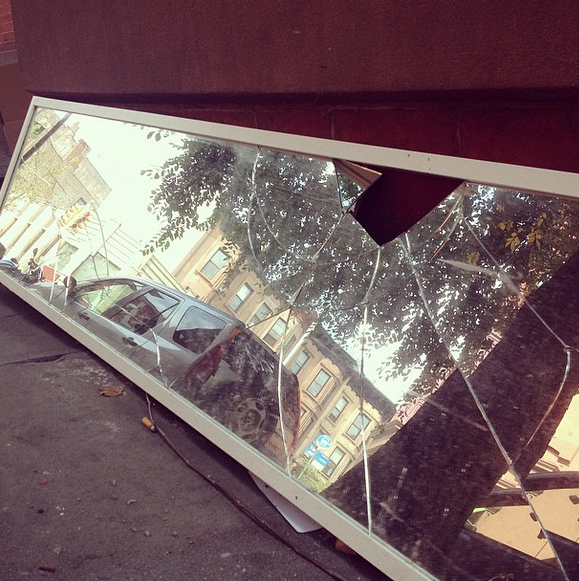

All creativity begins with the moment of conception.
That little piece of kindling that gets the fire going. That initial source of inspiration that takes on a life of its own. That single note from which the entire symphony grows. That single spark of life that signals an idea’s movement value, almost screaming to us, something wants to be built here.
And so, in this new blog series, I’m going to be deconstructing my favorite moments of conception from popular movies. Each post will contain a video clip from a different film, along with a series of lessons we can learn from the characters.
Today’s clip comes from the typing scene in Misery:
What can we learn?
If you do it right, you never start with nothing. Everyone has the equivalent to a blank page in their
lives. It’s that intimidating,
torturous, paralyzing and dreadful part of the work that requires you to
confront an empty canvas and create something from whole cloth. Cartoonists
even have a name for it. They call it the blazing island of white. But while
many artists romanticize the notion of the blank page, it’s actually a
profoundly unhealthy and inefficient way to work. What’s smarter is to dig your
well before you’re thirsty. To accumulate
an ongoing reference file for your brain to work on through a passive,
unconscious process. Think of it as forced savings
account for your ideas that always has a high enough balance to make
withdrawals. That way, when you sit
down to create, the blank page is no longer ground zero, your life is. Because
your intellectual reservoir is constantly replenished, the blank page has
become a moot point instead of a massive pain. Paul, on the other hand, doesn’t have a choice. Instead of completing
the first draft of his novel in his usual historical, elegant hotel room, now
his most loyal, but most psychotic fan is holding him captive. And when he
fails to populate that blazing island of white, she smashes his ankles with a
sledgehammer. A good reminder that our
creative blocks could always be worse. Are
you fortifying your intellectual inventory with an organized, trusted and
robust system?
Pave the way for prolificacy. Paul’s writing process may be interesting for the
screen, but it’s impractical for the career. No wonder he has writer’s block.
Sitting down at a blank page is a cold
start. It’s too overwhelming to the brain, which pushes a person to do too much
work inside their head. And it creates too many outstanding thoughts that plague
the consciousness, which makes it harder for a
person to think creatively. It’s like walking
into a factory and forcing the machine to run before it’s been brought up to
operating temperature. Talk about misery.
And so, the smarter approach to creating is much more gradualistic.
Digging your well before you’re thirsty. Living your life in a way that
your art gets done over and over. Making
sure that the heavy lifting is everything that comes before your eyeballs stare at the blank canvas. That way, as
soon as your butt hits the chair, you can hit the ground running instead of
killing yourself trying to will ideas into existence. It’s the difference
between sitting down because you have something to say, and sitting down
because you just have to say something. Are
you making it too
hard on yourself to allow for psychic fuel to show up?
Be
interesting before you open your mouth. I wrote my first book during my
senior year of college. Not bad for my literary maiden voyage, but overall, it
was a paragon of imperfection. It had design flaws, grammatical
inconsistencies, even a couple of printing errors. But it didn’t matter. It was
done and it was mine. I could touch it and smell it and hold it. And nobody
could take that away from me. The best part was, because of the book, I now had
something to do the talking for me. It was a hundred page calling card. A proxy that could do a lot of the heavy lifting
before I opened my mouth. And that was something my mentor always stressed. He
said that the greatest competitive advantage is, they’ve heard of you before.
Meaning, your strategy as a creator isn’t to build a hype engine around your idea,
but to physically make that idea. To build
a prototype people can smell and touch. That way, when the time comes, you
can slap it down on the table and let it do the talking for you. That’s not
high concept, that’s high context. And it’s what makes your work stick. What could I
you do to establish instant credibility in this moment?
What did you learn?
* * * *
Scott Ginsberg
That Guy with the Nametag
Author. Speaker. Strategist. Filmmaker. Publisher. Songwriter.

Never the same speech twice. Customized for your audience. Impossible to walk away uninspired.
Now booking for 2014-2015.
Email to inquire about fees and availability. Watch clips of The Nametag Guy in action here!
